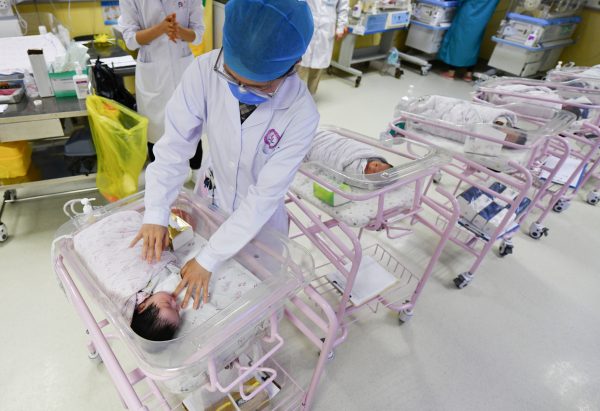The Chinese government announced the decision to implement a new three-child policy in May 2021. Widespread concerns about falling fertility and rapid population decline have overturned the half-century-old policy originally implemented to limit the population. There are a number of points that are crucial in considering China’s low fertility, population growth, their implications and how they should be dealt with in the coming decades.
After the Second World War, many less developed countries experienced a fast mortality decline. This, along with high fertility, caused a great increase in the number of surviving children and led to rapid population growth. In the second half of the 1960s, China’s annual population growth rate rose to over 2.5 per cent and the share of children under 15 years old reached more than 40 per cent of the population.
Facing these unprecedented changes and the looming pressure of a potential population ‘explosion’, researchers, policy makers, international organisations and ordinary people started considering strategies to contain population growth and adjust reproductive behaviour. These efforts and changes effectively prevented populations from exploding through lowering fertility, which also contributed to rapid socioeconomic development in many countries.
China’s rapid fertility decline is not unique, despite having been heavily affected by the government-led birth control program. Similar fertility changes have been observed in many other populations. In 1970, only 12 countries and territories had below-replacement fertility (lower than 2.1 live births per woman). By 2020, the number reached 94, with 26 populations having a total fertility rate of lower than 1.5 births per woman.
Fertility falling to a very low level has become a worldwide phenomenon. China’s rapid fertility reduction is part of and has been strongly influenced by this trend. China’s birth control program and government policies accelerated its early fertility decline.
Since the mid-1990s, however, this change has been driven increasingly by the remarkable social, economic and cultural transformation in the country. This conclusion is also supported by the experiences of countries such as Italy, Japan, Singapore, South Korea and Spain, where fertility continued to fall or remained at very low levels for a significant period, despite recent pro-natalist policies and incentive measures for childbearing.
Very low levels of fertility can have profound implications. A shrinking working-age population and a declining national population could affect China’s future socioeconomic development and its international influence. Changing age structure, especially rapid population ageing, will bring unprecedented challenges.
China also faces the risk of falling into the ‘low fertility trap’. This refers to a kind of ‘demographic regime change’ where certain demographic, social and economic mechanisms can help to reinforce the ‘process toward lower and lower birth rates and consequently accelerating population ageing and shrinking population size’. These concerns partly explain why China rushed to introduce a new policy, but whether the three-child policy can generate a major fertility increase is questionable.
Moderately increasing fertility may help to ease some of these concerns through improving population age structure, increasing population size, preventing a rapid decline of the working-age population and lowering the proportion of old people. But this is only one type of solution for countries facing similar demographic realities. Improving population health (especially at older ages), postponing the retirement age and raising the productivity of workers are more effective and complementary long-term strategies that should be considered.
This is an era of rapid demographic changes. The life expectancy of the global population has been increasing since the mid-20th century and there is no sign of stopping. This alone could keep increasing the number and proportion of old people. In this process, presumably many people under 70 will become healthier. As a result, some traditional concepts and measures, such as ‘old’ or ‘old age dependency ratio’, will become less effective in describing and evaluating the demographic situation. They should be revised or replaced gradually in considering future population changes and development plans.
Zhongwei Zhao is Emeritus Professor in the School of Demography at the Australian National University.
Guangyu Zhang is Population Affairs Officer in the Department of Economic and Social Affairs at the United Nations. The views expressed in this paper do not necessarily represent those of the United Nations.


I fail to understand how Zhongwei Zhou and Guangyu Zhang can write about the demographic future of a county like China without mentioning climate change. Is it possible they believe climate change is NOT an existential threat? Is it possible they believe China will be more prosperous and more powerful if its population in the year 2100 is approaching 2 billion? There is so much evidence that national prosperity and power are not directly linked to population size. What the world needs now is a robust debate about “optimum population size”, for the whole world and for individual countries, and about the best policies to achieve that size. The young men and women of China seem to know the answer. They are voting with their decisions to keep the national fertility rate below the 2.1 replacement ratio. They don’t need PhDs to see that their children and grandchildren will have better lives if China’s population size is trending toward 1 billion instead of 2 billion.